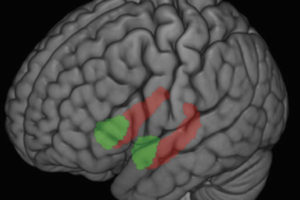Approaching the 3-year anniversary of the onset of the COVID-19 pandemic, many can attest to the mental health challenges that came with the sudden changes to everyday life as the disease took hold. In schools, teachers and support staff were forced to revamp lesson plans for virtual and hybrid learning environments, all while toggling between remote and in-person duties and supervising at-home learning. How did these stressors affect school system employees? Not well, confirms a newly published study from researchers at University of Wisconsin–Madison’s Center for Healthy Minds.
The study, led by CHM research scientist Matthew Hirshberg and published Jan. 11 in the journal Educational Researcher, is among the first to collect empirical data on school system employees’ mental health during the early stages of the pandemic. A large majority of surveyed school system employees reported clinically meaningful levels of anxiety, and more than half reported symptoms of clinical depression. The study also revealed a possible connection between household income and reported anxiety and depression symptoms.
Between June and August of 2020, 662 PreK-12 Wisconsin school system employees ranging from teachers to coaches and food service workers, enrolled in a study investigating whether a meditation-based well-being app, the Healthy Minds Program, could reduce distress and increase well-being during the pandemic. The CHM team used baseline data to estimate the prevalence of stress, anxiety and depression levels, as well as participants’ intent to continue in the same professional role.
Using widely validated measures, CHM researchers assessed participants’ perceived stress, anxiety and depressive symptoms. The assessments included questions like, “How often have you felt that you were on top of things?” and gauged participants’ feelings of nervousness and self-worth.
Startlingly, about 78% of participants reported clinically meaningful levels of anxiety symptoms, and nearly 54% reported clinically meaningful depressive symptoms.
“The degree of elevated symptoms of depression, anxiety and stress we observed is certainly concerning,” says Simon Goldberg, a UW–Madison professor of counseling psychology and a member of the research team behind the study. “The good news is that we have a large body of evidence suggesting that a variety of psychological interventions can be helpful in reducing exactly these symptoms. Mindfulness and other forms of meditation are among the approaches shown to reduce this kind of psychological distress.”
The research team also examined whether individual characteristics such as family income or type of job affected symptoms. Participants with the lowest family income levels reported higher stress, a greater likelihood of depressive symptoms and reduced intentions to continue in the same job in the following school year. This leads to the possibility that increased wages could buffer against stress and depression for workers in positions that are hard to replace.
This new study reinforces prior research on educator burnout and COVID-related anxiety during the pandemic, adding to an understanding of who may be at greatest risk (low-wage employees) and points to what might be done to counteract these risks, namely mental health support and increased wages for lowest earners.
As school system employees navigate year three of the pandemic, certain COVID-specific anxieties may diminish. However, this study shows that more general mental health concerns are widespread among teachers and other school employees.






